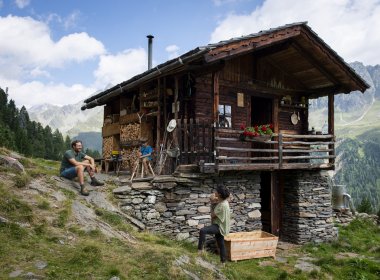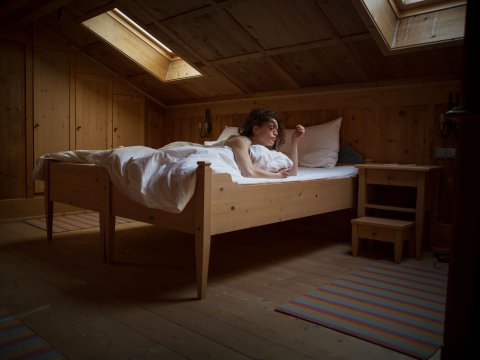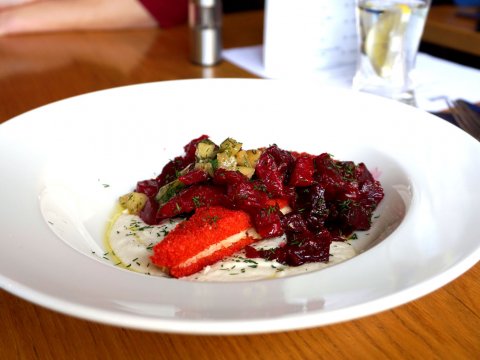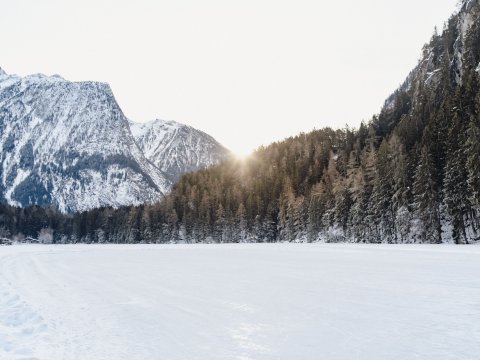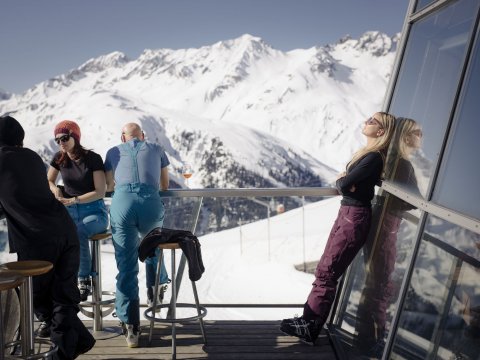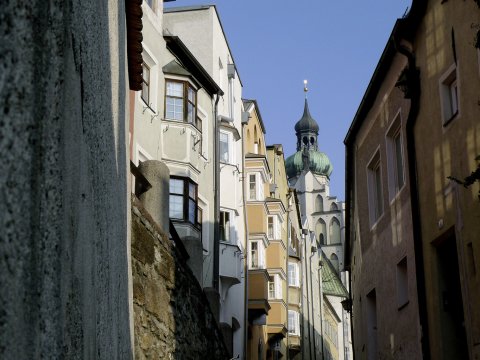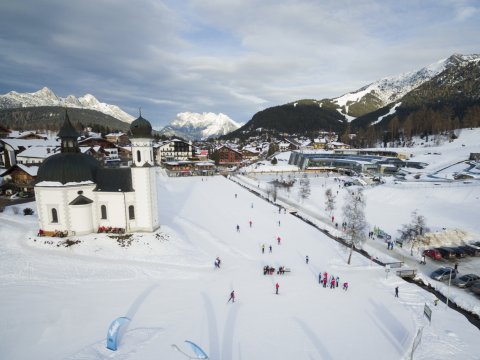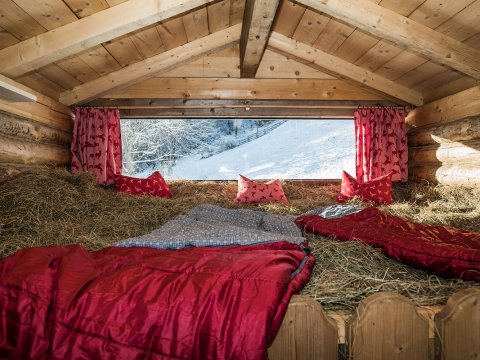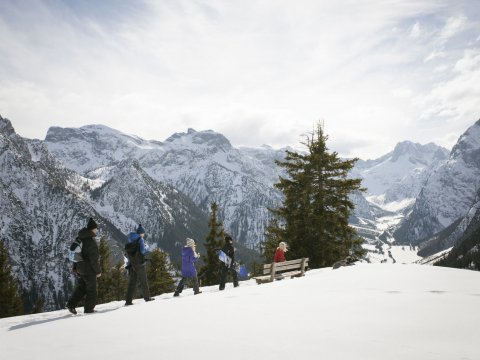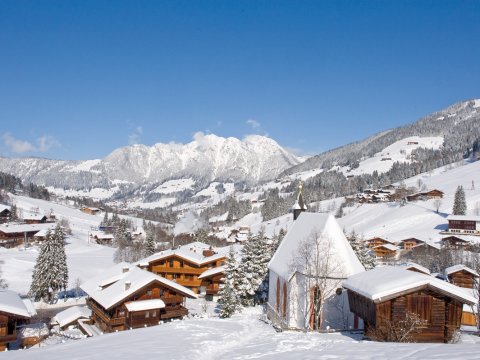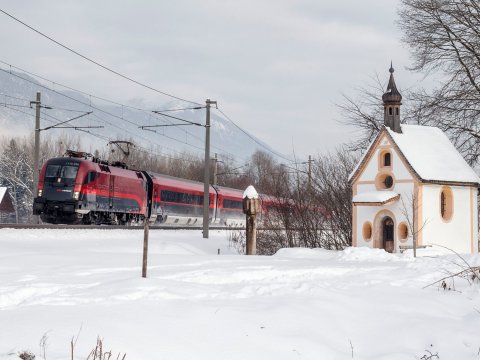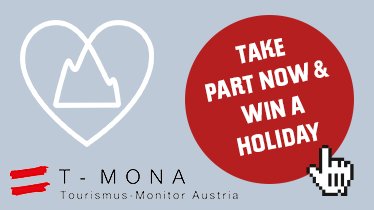The Gentle Way: A Winter Vacation in Schmirn, the Mountaineering Village

It seems as if they were firing a farewell gun salute on this last morning in Kasern, at the far end of remote Schmirntal Valley. It’s freezing cold. We have spent a weeklong winter vacation in an isolated side valley at the heart of the Tux Alps and enjoyed its solitude and tranquility to the fullest. Thus, this distant noise somehow distracts us. The closer we get to the end of the valley, the louder it gets. Eventually, we can see a helicopter circling around a mountaintop. We remember: on the other side of the mountain lies the Hintertux Glacier Ski Resort, with its terrain buried under last night’s heavy snowfalls. Apparently, they trigger controlled avalanches with explosives to ensure that today’s ski resort operation is safe.
Suddenly the explosions stop and we can see the sun rise behind the mountain. We soak up the restored tranquility—and the warmth of the sun rays. The temperature is a bone-chilling minus 16 degrees Celsius and our fingers and toes are icy. Schmirn, they told us, can be a really cold place.
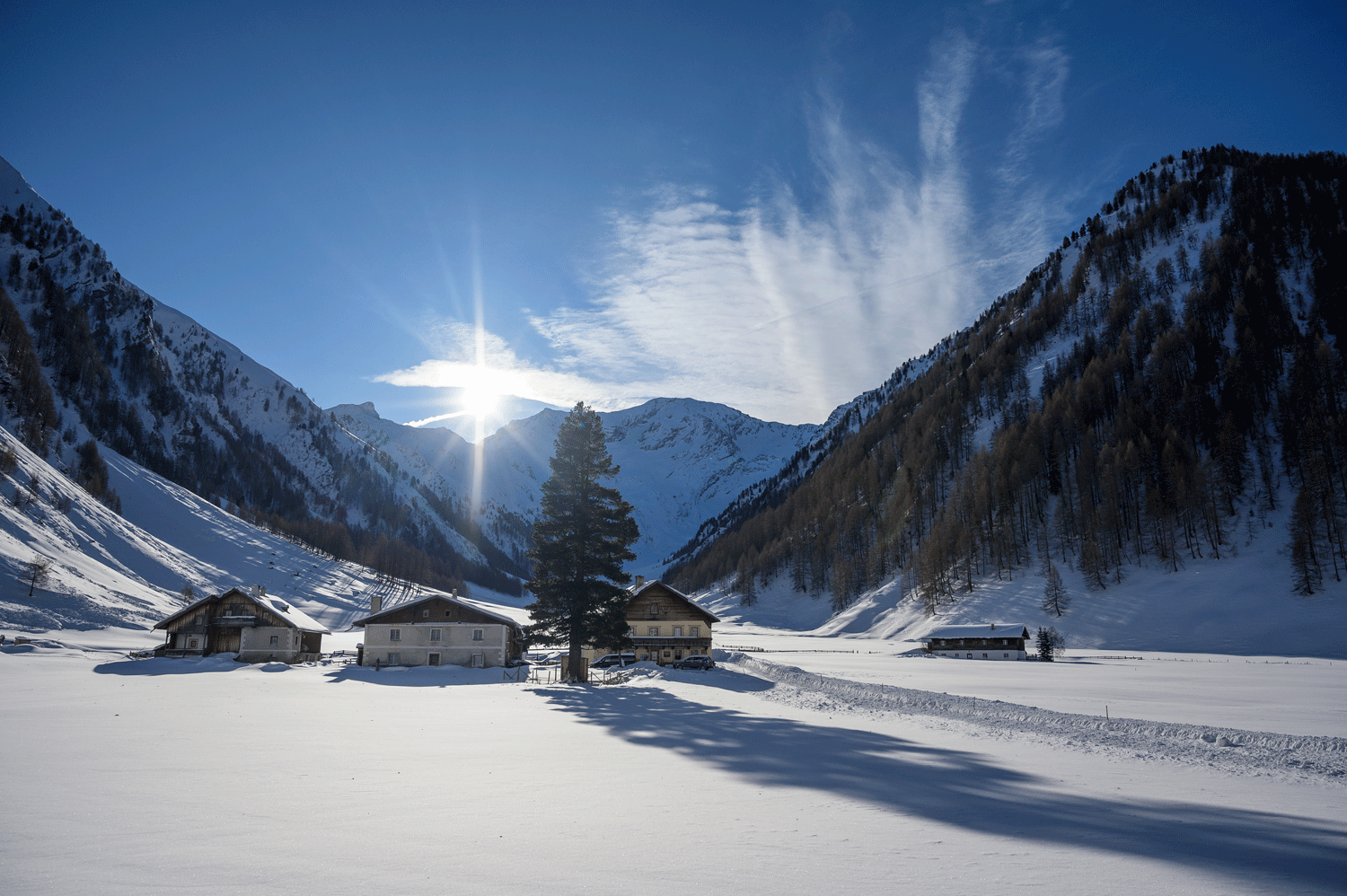
Seven days earlier. My wife and I are sitting in the train from Berlin to Innsbruck. We are looking forward to a week of snowshoeing in a pristine valley far away from the hustle and bustle of everyday life and in magnificent wintry surroundings.
Up to now, we have always been travelling to the mountains by car. As we love to explore less crowded and remoter valleys on our trips, we had thought a car is required to get to those snowy wonderlands. This time, though, we have opted for a car-free vacation, taking the train and local public transportation. We have been thinking about getting rid of our car for a long time. Foremost because of climate change reasons, because cars are a large source of carbon dioxide emissions. However, we also aren’t very fond of crowded cities and traffic jams and think that time spent on a train can be used more productively for working or reading. But now, sitting in the train, we wonder if we will miss the car on this trip. Will it work out getting around by bus? And will we face train delays, cancellations and similar adventures?
Arriving in Steinach am Brenner by regional railway from Innsbruck, we have enjoyed a truly pleasant journey, without one minute of delay. At the local tourist information office of Wipptal we are handed out the snowshoes that our host has booked for us. What’s best, as holders of the local guest benefit card the snowshoe rentals are free for the whole week, crampons included. That’s a very nice surprise, we hadn’t expected such a thing. Besides, we are really starting to appreciate the included benefits of the guest card. As the friendly ladies at the tourist information office tell us, it can also be used as a ticket for public transportation in the area, from Innsbruck to Brenner Pass.
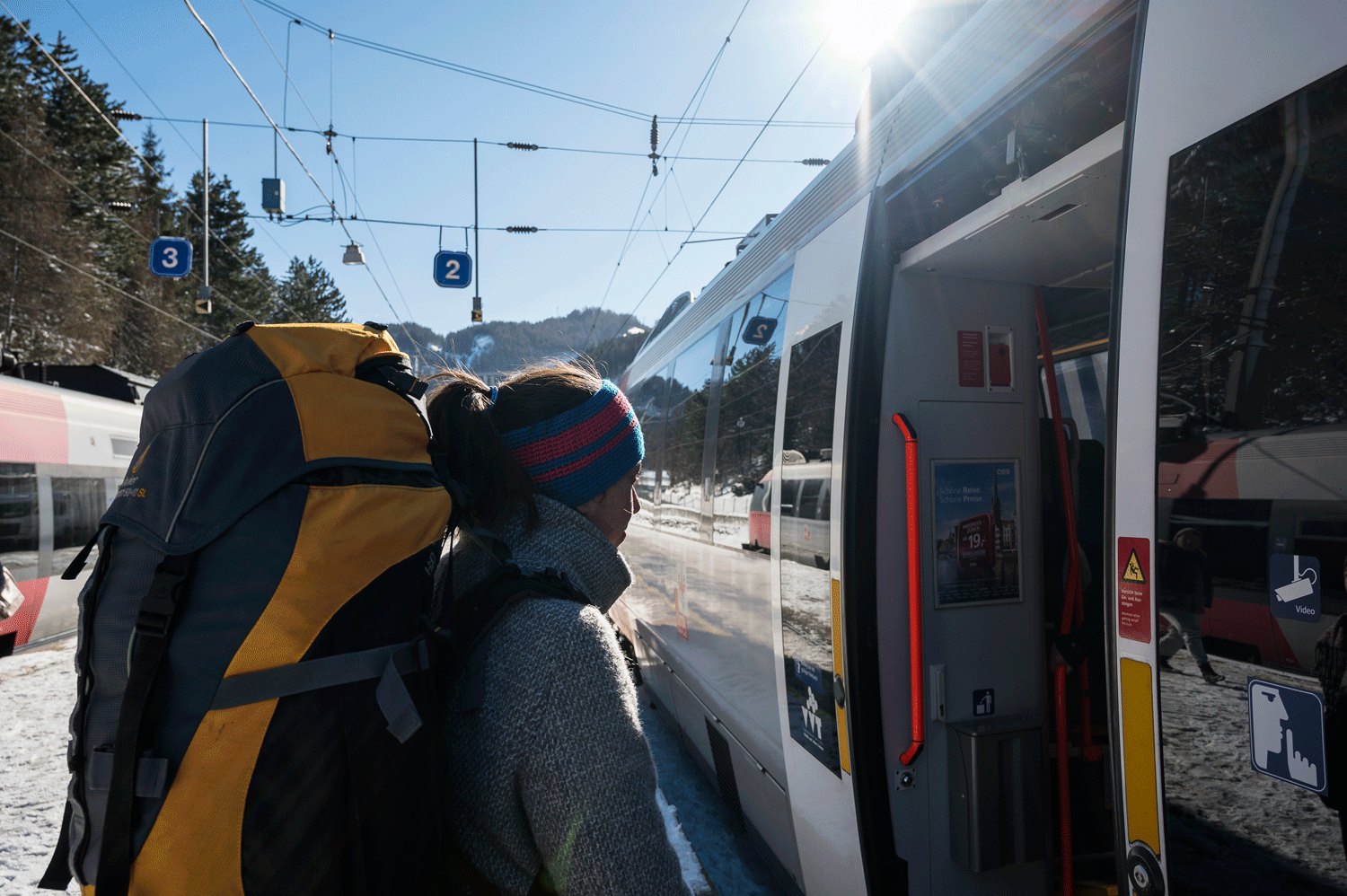
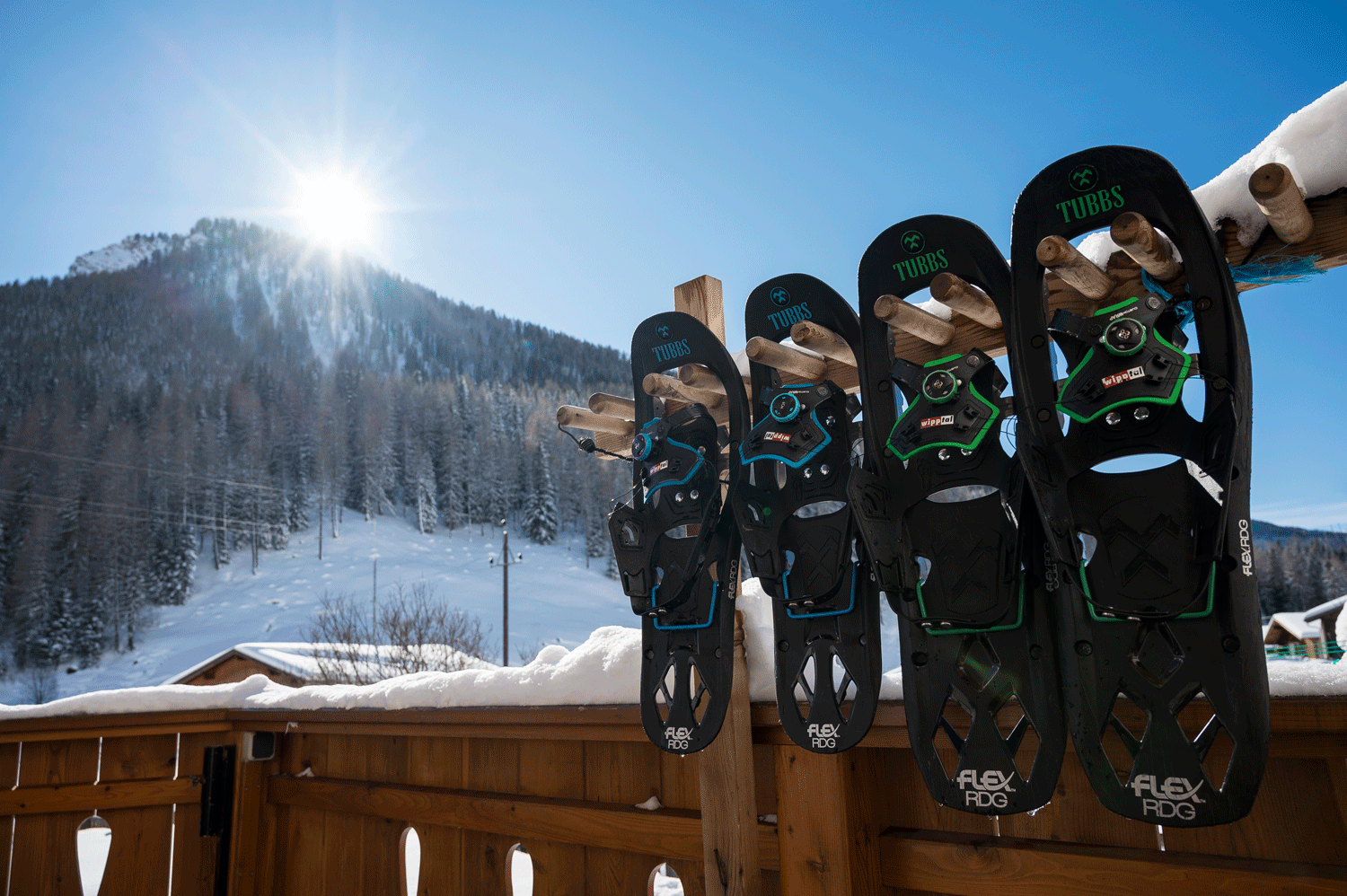
A few minutes later, we are sitting in the bus that zigzags its way up from St. Jodok to snowy Schmirntal Valley in steep switchbacks. St. Jodok, Schmirntal and neighbouring Valsertal Valley are part of Tirol’s Mountaineering Villages. Adhering to the rigid quality criteria imposed by the Austrian Alpinist Association, a strong sense of environmental awareness and sustainable tourism practices exists at these resorts. In 2019, opposite Gschnitztal Valley was also put on this list.
And then we have arrived. Finally. The hamlet of Toldern, resting in the shadow of mighty 3,476-meter Olperer Peak, is nothing more but a handful of farmsteads, homes and one inn. That’s it. There are no ski lifts, no gondola, no hotel resorts. We watch the last rays of the setting sun bath iconic Olperer in a mellow light. And meet our host, who warmly welcomes us to her place on the street.
During our first days, we don’t even need a bus or train. Instead, we explore the surroundings on our doorstep. And there are plenty of ways to do so. We traverse Wildlahnertal Valley on snwoshoes and climb up to Isse Alpine Pasture, we explore the isolated hamlet of Kasern with frozen Schrager Waterfall and we walk towards Mader-Ochsenalm Alpine Pasture. The best tour, however, takes us to the 2,150-meter summit of Rauher Kopf Peak. The trail climbs through pine forests and open meadows before rising to the summit that affords breathtaking views of the Stubai Alps to the west. Close-ups of prominent Habicht Peak offer a spectacular backdrop. This is the highest elevation we access as higher up the avalanche risk level is rated considerable.
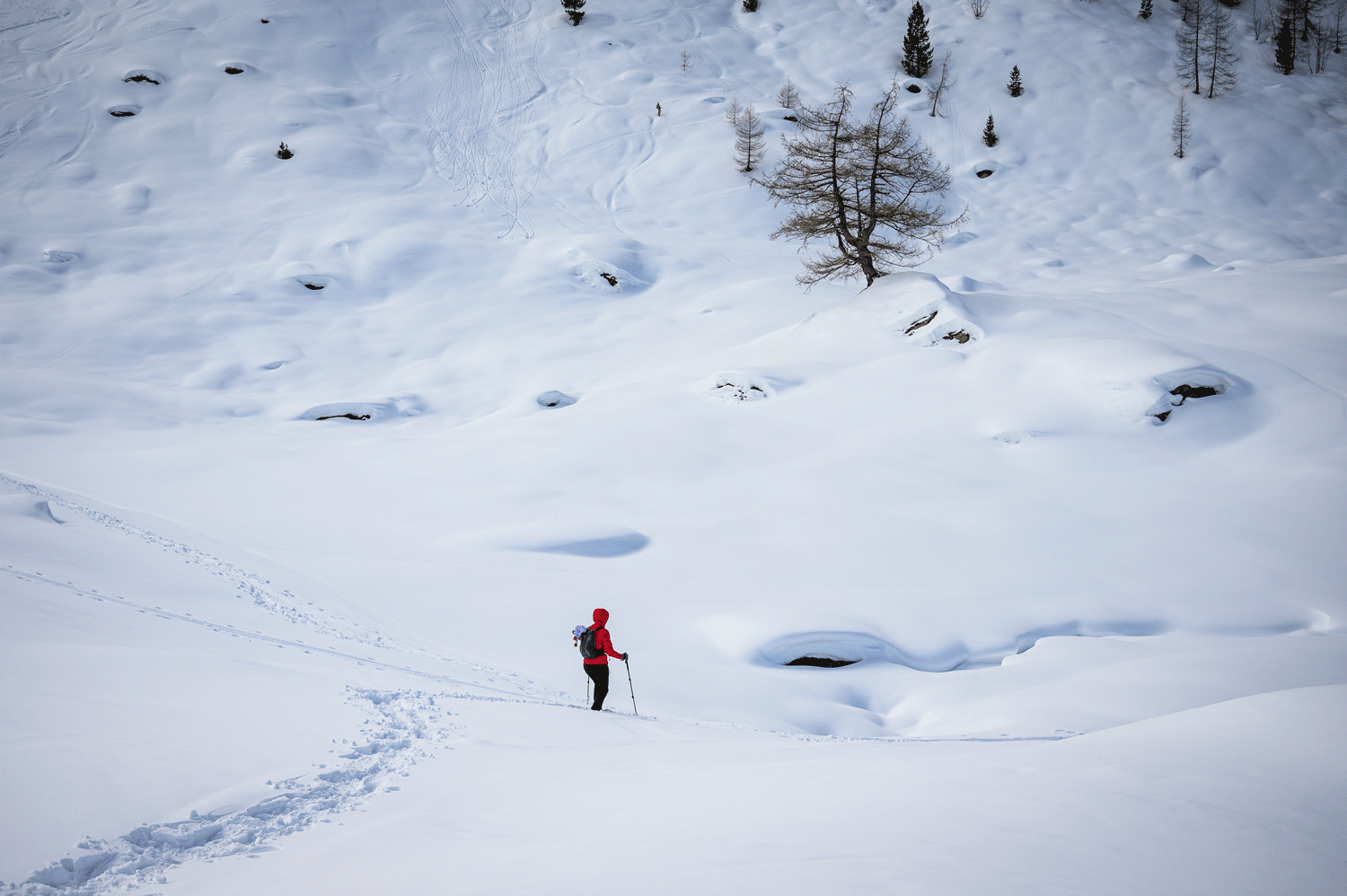
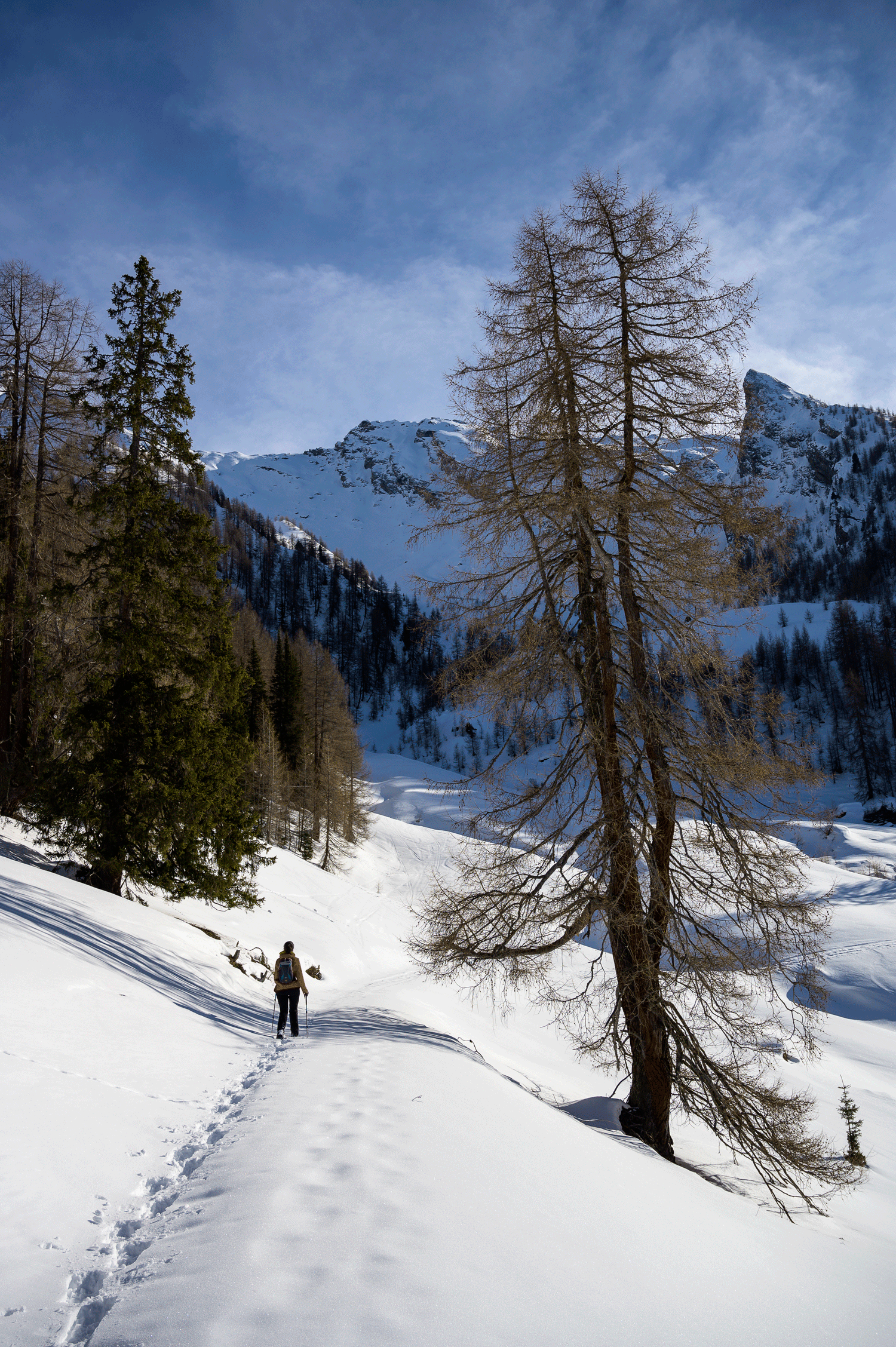
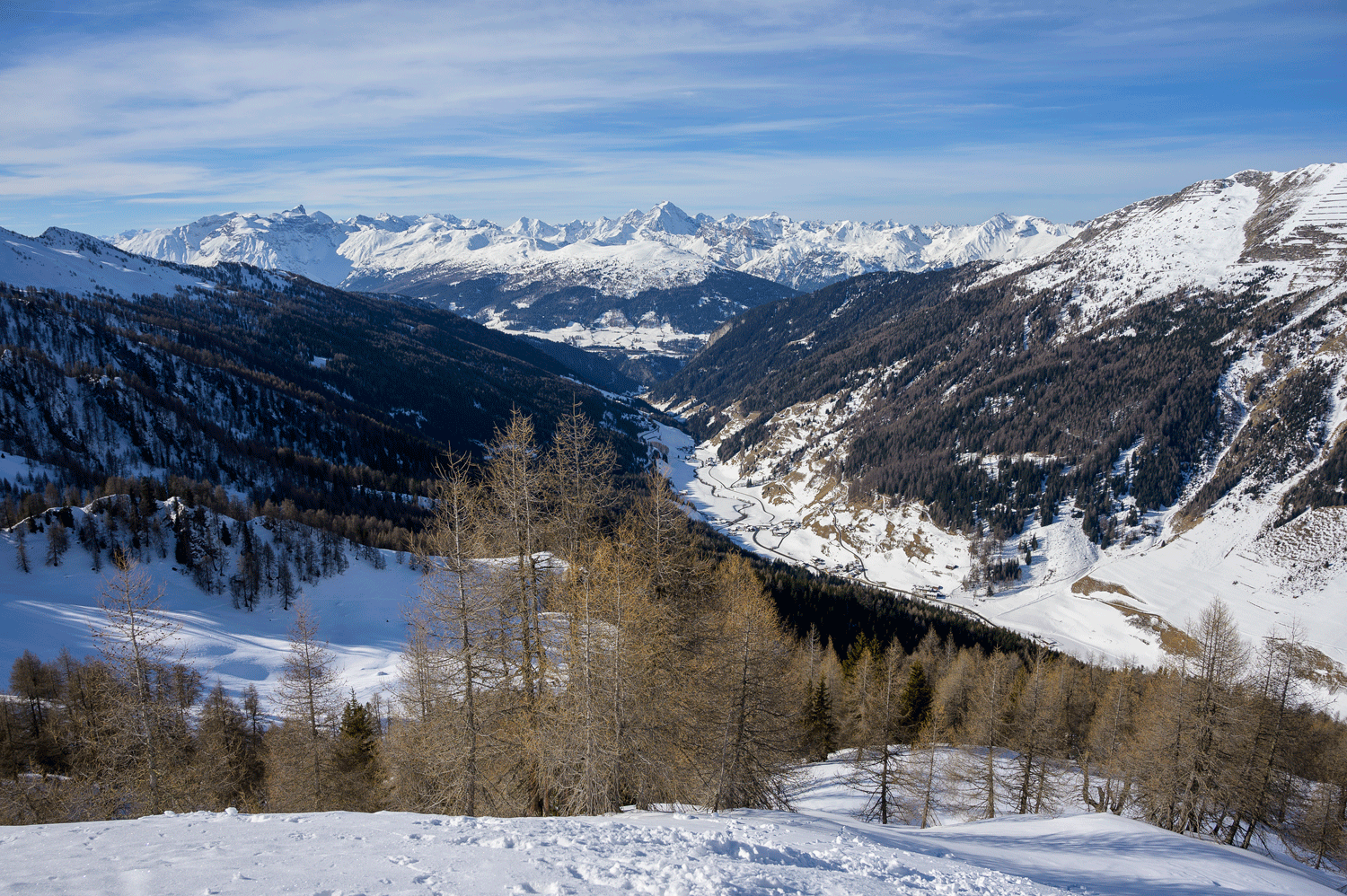

Apart from snowshoeing, ski touring is another wonderful way to explore the unspoiled backcountry. While having dinner at Gasthaus Olpererblick Inn, young and cheerful innkeeper Kati Früh tells us that Schmirntal and its neighbouring valleys are growing in popularity as a ski touring terrain. This is as well due to the fact that this locale usually receives plenty of snow in the winter. Innerschmirn, they say, gets heavy snowfalls thanks to its closeness to the Zillertal Alps. “We have more winter visitors than summer visitors,” Kati explains. In the warm summer months, most tourists have lunch or dinner up on a mountain hut. Kati’s inn is a member of “Tirol’s Regions of Culinary Excellence” and serves delicious meat specialties of the Tirolean Grey Cattle. Tirol Greys are among the oldest, rarest cattle breeds in the Alps, well suited for the sustainable cultivation of the Alpine regions. The rugged and undemanding breed spends their summers grazing the surrounding, high Alpine pastures. “I see it as my job to help people slowing down from the stresses of everyday life,” says Kati. Staying here at this magical place at an elevation of 1,500 meters, cocooned from the outside world, it’s hard to believe that anyone could feel stressed up here.
Our beautiful, tiny holiday home is just a few steps from Kati’s inn. It is located in the home of Salchner family, our very friendly hosts. They have a second, bigger apartment where some ski touring fans stay. The beds and furniture are made of fragrant stone pine by the owner himself—Gerhard Salchner runs a small carpentry. From our kitchen window, we see beautiful farmsteads and the mountains of Wipptal Valley in the distance—we find ourselves in a world almost as far removed as you can get from the hustle and bustle below.
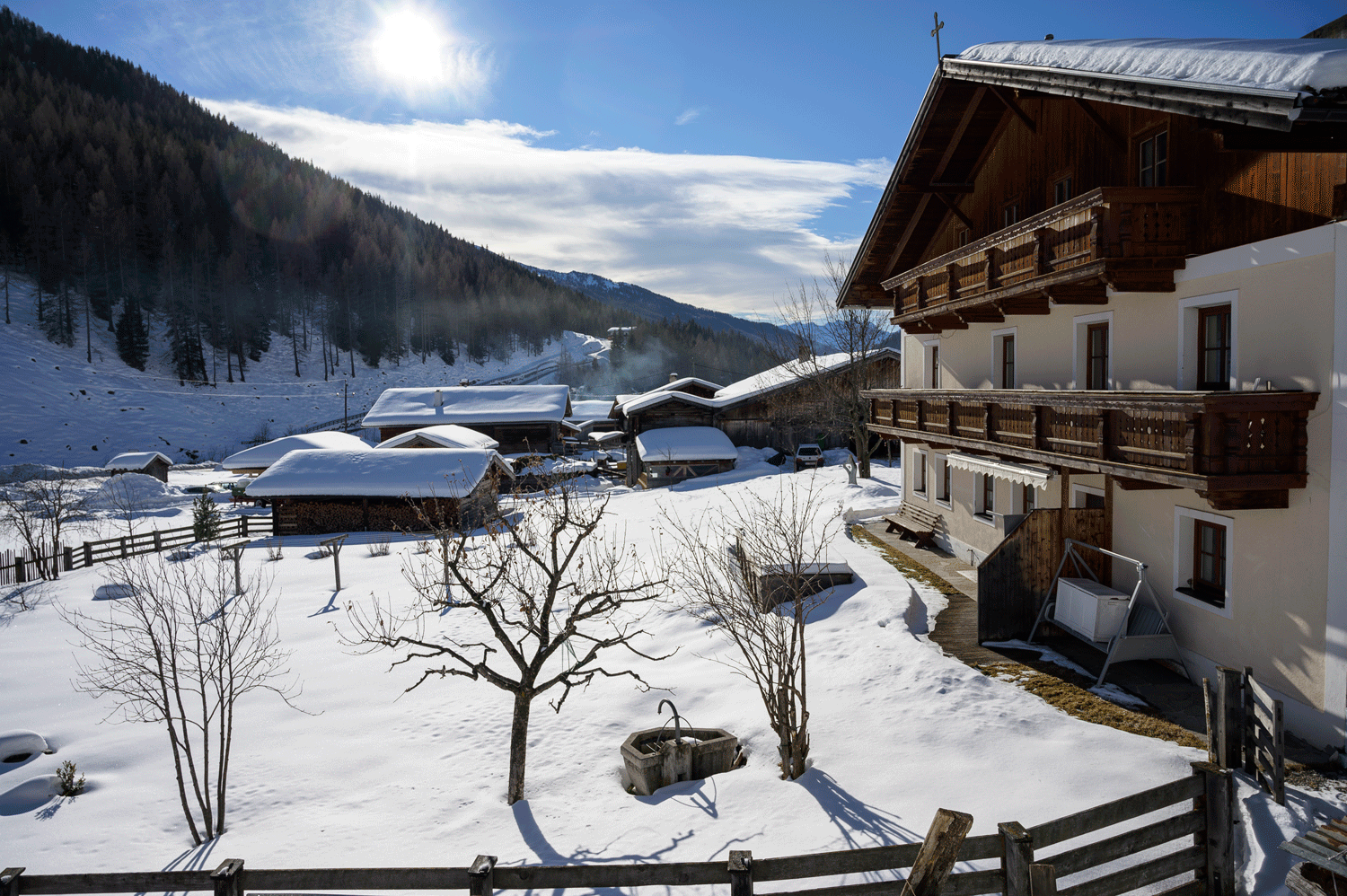
The people we meet are quick at lending a helping hand. One rainy day, Kati the innkeeper takes us to Innsbruck in her car. Returning from a walk, we get a lift from other tourists. The on-call bus ride service that runs free for guest card holders three days a week makes an exception and brings us to St. Jodok, unscheduled. When the rain became snow and we decided to try our hand at sledding, everyone offered us sleds. We notice that it is really easy to meet new friends when you are travelling car-free. Moreover, we don’t have to bother about snow chains and cleared roads.
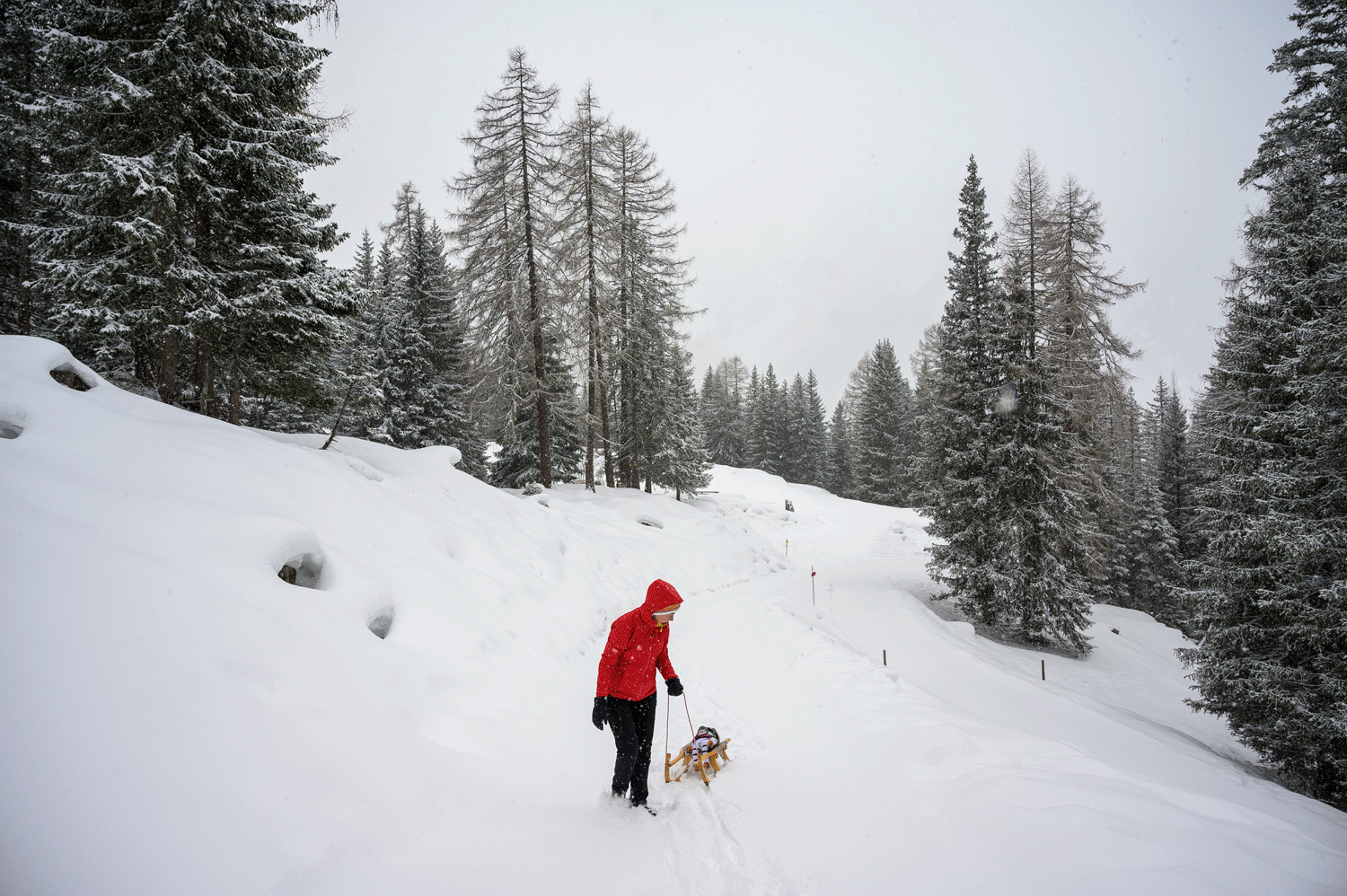
On our last evening, while 40 centimeters of fresh snow are falling outdoors, our hosts Gertraud and Gerhard Salchner invite us into their cozy kitchen for a last glass of schnapps. Of course, they serve us stone pine schnapps, along with the warm feeling of being truly welcome.
After the farewell gun salute that was given to us by the avalanche safety commission of Hintertux Glacier Ski Resort, we are waiting for our train departing Innsbruck train station for Berlin. We feel totally relaxed and restored and ask ourselves: Did we miss our car once during the last week? The answer is a resounding no! We were totally happy with the snowshoes first. Then we had to cope with the bus schedule that arguably has its shortcomings. However, our mobility needs were answered all the time.
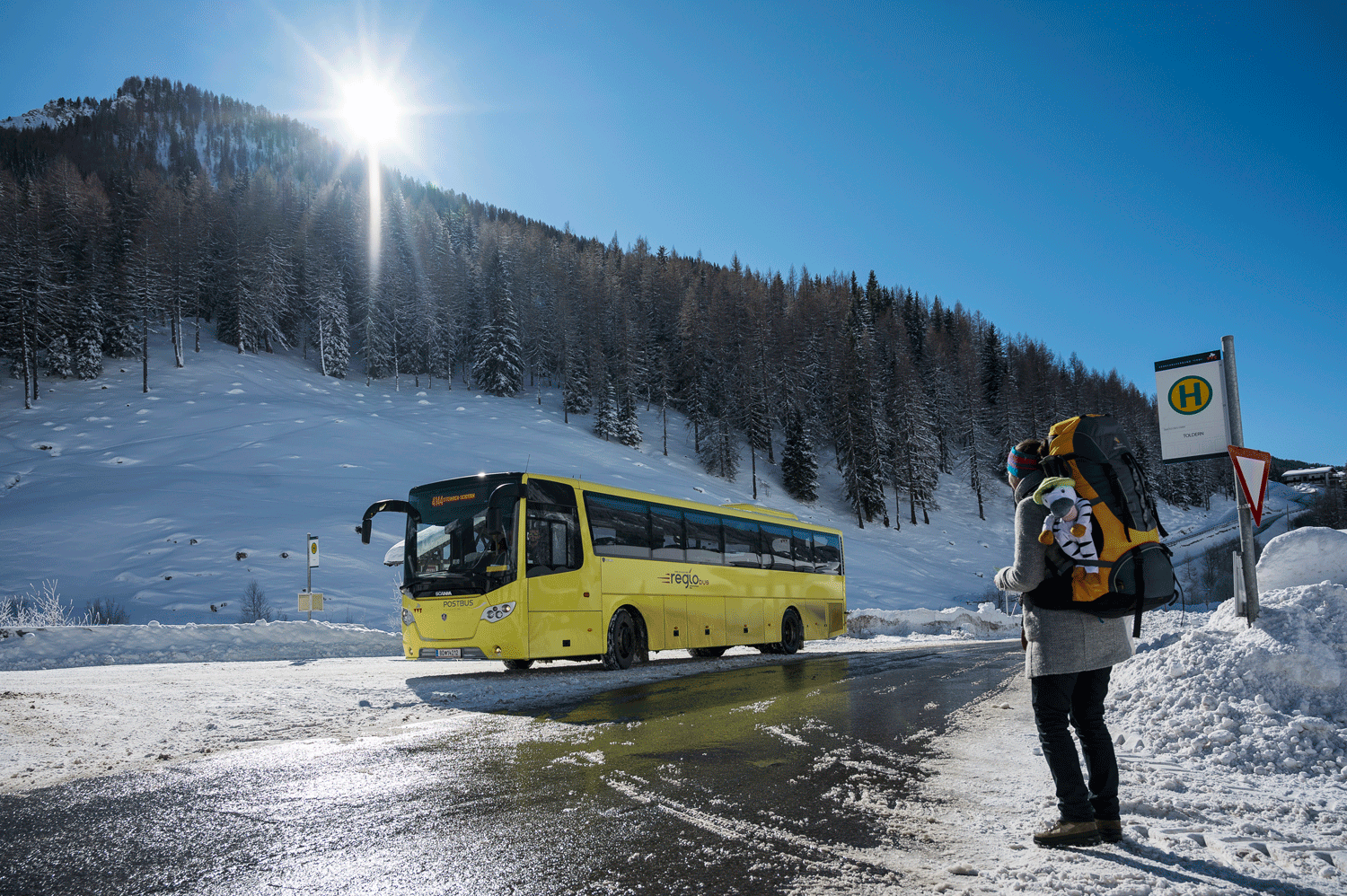
Suddenly we are treated to an announcement over the public address system: The locomotive needs to be changed and it will take some time before the train can leave the station. This is the lead-up to an adventure we hadn’t expected. The story continues in the next train station. This time, the changed locomotive needs to be replaced. For a long time we don’t know when and how our journey will continue. More than an hour later we are underway again, but the bad news just don’t seem to stop. Obviously, the train isn’t running on time and we will likely miss our connecting train in Munich. The announcer, who by now I really begin to like, starts informing the train travellers with a good dose of humor: The route across Inntal Valley was his personal route of bad luck where he always had to announce bad news. He kindly asked us to join him on the route to Salzburg next time. That would always go off smoothly.
In the end, we are able to catch an unexpected express train from Munich to Berlin and the delay wasn’t that huge anymore. Our car-free Tirol vacation really worked out very fine. Salzburg can wait.
Photos by Sebastian Höhn










